Dave Larock in Monday Interest Rate Update, Mortgages and Finance, Home Buying, Toronto Real Estate News
Editor's Note: Dave's Monday Morning Interest Rate Update appears
on Move Smartly weekly. Check back weekly for analysis that is always
ahead of the pack.
Five-year fixed-mortgage rates moved higher last week as lenders
continued to respond to the recent run up in Government of Canada (GoC)
bond yields, which have risen from a low of 1.13% on May 1, 2013 to a
high of 1.63% on June 12, 2013.
Fixed-mortgage rates have been at
ultra-low levels for a long time, so it’s not surprising that the vast
majority of borrowers have been opting for the comfort and familiarity
of the ‘banker’s favourite’ five-year fixed term (here is a post I wrote
that explains why I call it that). But after the recent increases to
five-year fixed rates, I think there is an increasingly compelling case
to be made for the variable rate instead.
Here are five reasons why I think the five-year variable rate is worth a fresh look:
- For
much of the past year, the spread between five-year fixed and variable
rates was less than 0.25%, which meant that it would take only one
increase by the Bank of Canada (BoC) to make five-year variable-rate
mortgages more expensive than their fixed-rate alternatives. After the
latest round of fixed-rate increases, this spread is now greater than
0.50%, which gives variable-rate borrowers a wider ‘margin of safety’
between variable and fixed rates. - If you’ve recently agreed to
purchase a home or have a renewal coming up, you need a mortgage at a
specific future date. If the vagaries of bond-market investors happen to
push up five-year GoC bond yields at the same time that you need a
mortgage, opting for a five-year fixed rate locks in that short-term
yield spike for the next five years. Conversely, variable rates don’t
move until the BoC raises its overnight rate and this happens much less
frequently, and on a more measured and considered basis. - When
borrowers dismiss the variable-rate option, the most common
justification I hear is that they’re worried they won’t be able to
afford future rate increases. Most of these same borrowers are surprised
to learn that they can only qualify for a variable-rate mortgage if
they prove that they can afford a doubling of rates over the next five
years. That’s because lenders now qualify variable-rate applicants using
the BoC’s Mortgage Qualifying Rate (MQR) which currently sits at 5.14% (here is a post I wrote
that explains the MQR in detail). If you can pass the MQR’s stringent
test, then you should feel confident that you can afford substantial,
and even unlikely, future rate increases. Variable-rate mortgages also
come with the option to convert to an equivalent fixed rate term at any
time with no penalty. While the conversion rates offered by different
lenders can vary widely, this free lock-in option gives you the ability
to eliminate further variable-rate risk.- Variable-rate mortgage
prepayment penalties are limited to a maximum of three-months’ interest
by any lender who is regulated under the Bank Act (which basically
includes every lender except for credit unions and private lenders).
Fixed-rate IRD penalties, in contrast, can be staggeringly high (see my post on the subject).
If you think there is any chance that you will have to pay out your
mortgage before the end of its term, consider that a variable-rate
mortgage penalty could easily be thousands of dollars cheaper than a
fixed-rate mortgage penalty. - Most economists are not forecasting
an increase in the BoC’s overnight rate until the second half of 2014.
The gap between now and then may not sound like much if you’re deciding
how to structure your mortgage financing for the next five years, but
consider that those same economists had been warning of imminent BoC
rate increases up until the start of this year. In fact, most of our
prominent economists seem to err on the side of being early, rather than
late, on their forecasts for BoC rate increases. So if they’re now
predicting that the next overnight rate hike won’t be until late 2014,
then chances are good that it’ll be long after. In the meantime, the gap
between now and whenever that moment arrives gives you time to bank the
interest-cost savings. (Reminder: the best way to do that is to set
your payments at the same level they would have been at if you had
chosen a five-year fixed-rate mortgage – you’ll pay off your mortgage
more quickly and get comfortable with a higher payment amount while you
do it.)
Five-year GoC bond yields were down four basis
points for the week, closing at 1.53% on Friday. All lenders have now
raised their five-year fixed rates in response to the recent run up in
bond yields and market five-year rates are now offered in the 2.99% to
3.09% range.Five-year variable rate discounts are offered in the
prime minus .50% to prime minus .45% range (which works out to 2.50% to
2.55% using today’s prime rate). Importantly, these more deeply
discounted variable rates can be found at lenders who also offer
excellent terms and conditions, as long as you know where to look.The Bottom Line:
When market conditions change, it’s important to take a step back and
re-examine the broader picture. Now that fixed-mortgage rates have
increased, the case for a variable-rate alternative has grown more
compelling and I think that borrowers who can qualify for this option
are well advised to give it serious consideration.David Larock is an independent mortgage planner and industry insider specializing in helping clients purchase, refinance or renew their mortgages. David's posts appear weekly on this blog (movesmartly.com) and on his own blog integratedmortgageplanners.com/blog). Email Dave
- Variable-rate mortgage





